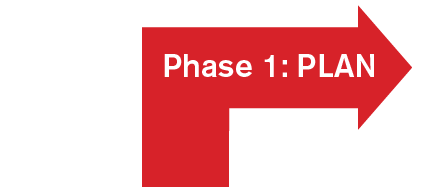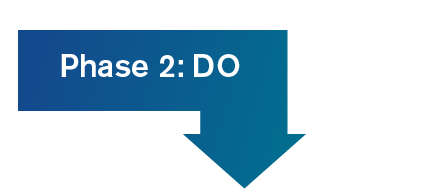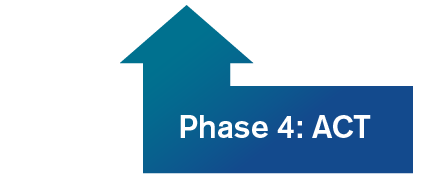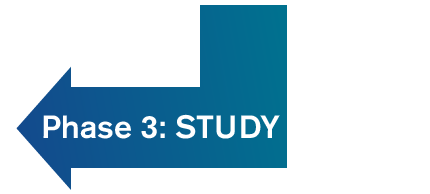
Phase 1: Plan
Overview
Assess Data to Determine Program Strengths and Areas in Need of Further Development
The planning phase of the ACGME-I Self-Study process involves several actions that include, defining a Self-Study committee aggregating and analyzing data from Annual Program Evaluations; and using that information to determine program strengths and areas in need of further development.
ACGME-I does not have specific requirements for who should be members of the Self-Study committee. The decision about the membership of the committee, how often it meets, and the overall plan for conducting the Self-Study are the responsibility of the program director; however, it is recommended that a wide net of stakeholders be involved throughout the process, such as:
- Residents/Fellows from all levels of the program
- End users of the program, such as patients or other professionals who regularly interact with residents/fellows during the educational program
- A program director from another program or specialty to offer an external perspective
- Staff members from the institution’s Graduate Medical Education office to help align institutional and departmental/program goals
- Members of the Program Evaluation Committee who are already familiar with the Annual Program Reviews and resulting action plans
- A member from the Clinical Competency Committee to add data on achievement of educational outcomes
Often, the designated institutional official (DIO) of the Sponsoring Institution is directly involved in the Self-Study process. Remember, residency and fellowship programs are evaluated together. It is therefore best if the Self-Study committee for a residency program includes representation from any affiliated fellowships, and that the Self-Study committee for a fellowship program includes representation from the affiliated residency program. Other members might include departmental leaders, chief residents, and experts in education, curriculum design, or assessment. The DIO may be able to provide suggestions for institutional experts.
Data for the Self-Study is information from successive Annual Program Evaluations. Data aggregated and evaluated should include: 1) improvements that have been completed in the last five years; 2) how any active citations have been addressed; and, 3) how the program’s aims are being addressed. Additional information from residents/fellows, program graduates, employers, or faculty members may be needed to conduct a thorough evaluation. For example, if one of a residency program’s aims is to educate physicians who provide high-quality primary care, a discussion with senior residents on their plans following completion of the program, and/or with a graduate or graduate employer survey may be necessary.
Once data have been aggregated and analyzed, the Self-Study committee should use the analysis to determine areas that need further development. This analysis should consider the program’s environment, including external factors and/or any threats that may limit program success. The program may consider conducting a SWOT analysis to determine its strengths, weaknesses, opportunities, threats, and aims. Engagement of stakeholders, such as faculty members, residents/fellows, and, in the case of a subspecialty program, leadership from the affiliated residency program, is a critical component to validate the committee’s assessment.
Resources
Suggested Annual Program Evaluation Action Plan and Follow-Up Template
Examples of External Factors and Areas Needing Development




